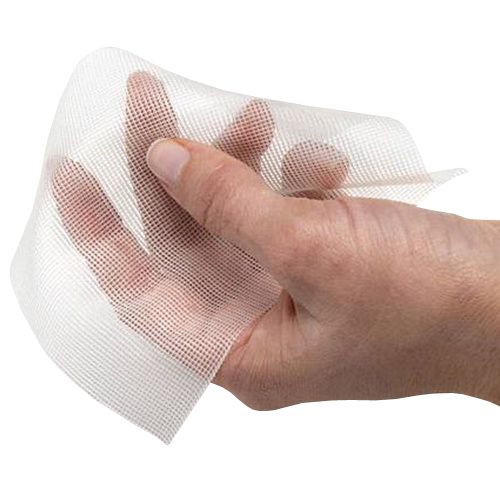Hollister Restore Contact Layer Flex Dressing With TRIACT Technology
Hollister Restore Contact Layer Flex Dressing With TRIACT Technology provides a moist wound interface and allows virtually pain-free removal for enhanced patient comfort. Dressing can be shaped to fit contours of deep or irregular wounds and in difficult anatomical locations while its gentle tack helps hold dressing in place and minimizes trauma to the wound bed. It forms a gel in the presence of exudate to help maintain a moist wound interface and can be used on a wide variety of wound types and in conjunction with NPWT. It also helps avoid trauma to delicate tissue upon removal.
Hollister Restore Contact Layer Flex Dressing Features
- Highly conformable, non-adherent, non-occlusive wound contact dressing
- Cost effective as remains in place for upto 7 days, which can result in fewer dressing change
- Maintenance of a moist wound environment
- Helps reduce or eliminate pain at dressing changes
- May remain in place for up to seven days
- Helps minimize damage to newly formed tissue
- Apply directly to the wound and cover with a secondary dressing
When to Use Hollister Restore Contact Layer Flex Dressing?
- Low to moderate exuding wounds
- Second degree burns and lacerations
- Surgical wounds, skin tears and minor abrasions
- Diabetic ulcers, pressure ulcers and venous stasis ulcers
- Wounds associated with epidermolysis bullosa (EB)
- Conjunction with negative pressure wound therapy (NPWT)
- Conjunction with an absorbent secondary dressing for more heavily exuding wounds
How to Use Hollister Contact Layer Flex Dressing?
- Remove the protective clear tabs from both sides of the RESTORE Contact Layer FLEX dressing.
- Apply RESTORE Contact Layer FLEX dressing to cover the entire wound using aseptic technique. The dressing may overlap onto healthy skin.
- Cover with appropriate secondary dressing using aseptic technique (gauze, transparent film, etc).
- Secure secondary dressing with tape or other material.
- Remove gloves and wash hands after completing procedure.
Removal of Dressing
- Wash hands and put on gloves.
- Remove secondary dressing.
- Remove RESTORE Contact Layer FLEX dressing.
- Irrigate wound base using RESTORE wound cleanser or sterile saline.
- Reapply dressing if necessary.
- Remove gloves and wash hands after completing procedure.
- Note:
- Change dressing every seven days or as required
- Dressing change frequency will depend on patient condition and the healing progression
Desired Outcomes
- To maintain a moist wound environment for the healing of partial to full-thickness wounds
- To help prevent pain during dressing removal
Select interventions to provide appropriate local wound care
- Prevent and manage infection
- Pain management
- Cleanse wound
- Remove nonviable tissue
- Manage exudate
- Eliminate dead space
- Control odor
- Protect wound and peri-wound skin
- Maintain a moist wound environment

















